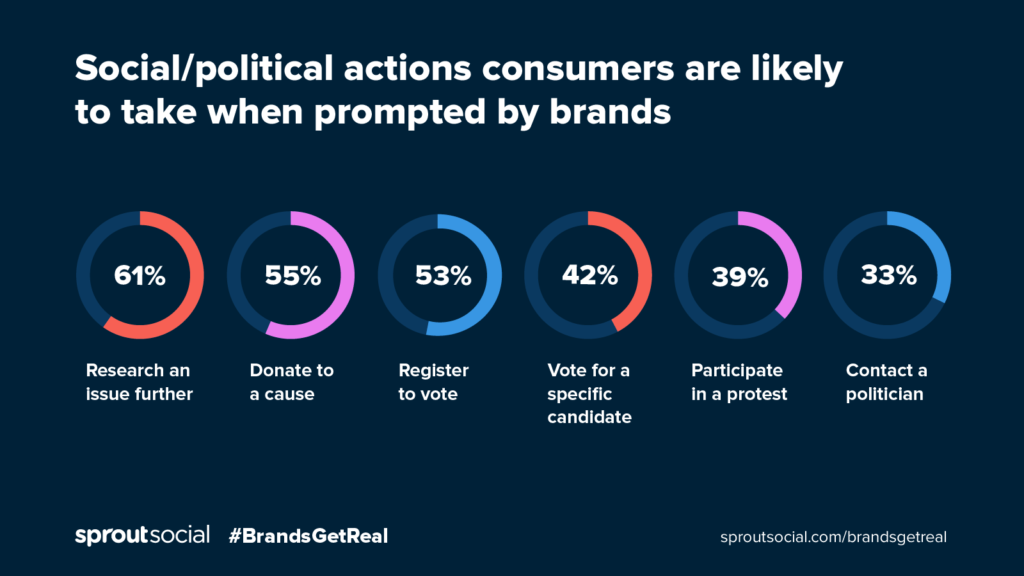Social media usage exploded in 2020 as the nation quarantined at home and turned to online networks for support or current events. In fact, seventy-two percent of people said their social media consumption has increased during the pandemic. But did they want to hear from brands? Marketers were forced to find new and different ways to stay relevant and connected to their online audiences.
Here are a few important lessons this year taught us about social media marketing:
1. Social is crisis communication.
Social media managers can absolutely add crisis communication to their resumes after 2020. Social media is an essential platform for company leadership to publicly address how they’re handling a crisis. It is also usually the first place customers or employees go to air their grievances (layoffs, backlash, etc.) Ensure you have a social media policy in place and a specific protocol to respond to these issues. No matter the issue, your social media response should be quick (within hours), empathetic, and transparent.
2. Social is for social responsibility.
The tone of social media changed in 2020. Consumers now want to hear the social justice stances of the brands they follow. According to Sprout Social, 70 percent of consumers expect brands to take a public stand on social and political issues, and nearly half want brands to voice their opinions on social. But they want them backed up with actions, not just “black squares” and empty words. Brands must be conscious of the impact of their actions on social media.

Not only does social responsibility appeal to your customers, it is also good for recruiting and employee loyalty. Peloton’s Head of Global Marketing, Dara Treseder, says the company’s “anti-racist” stance was one of the main reasons she took the position. Your social channels and website are the perfect place to highlight your social stances for both customers and prospective talent.
3. Social should be inclusive.
Inclusive social media marketing is good social media marketing. Without it, you run the risk of not connecting with your full potential audience. Here are a few inclusive and accessible social best practices to keep in mind:
- Add Alt-text to images. Descriptive captions and alt text allows people to visualize images when they can’t see them. Alt text is now available across Facebook, Twitter, Instagram, and LinkedIn.
- Include video captions. Closed captions are crucial for those with hearing impairments, but they also appeal to those listening with their sound off. In fact, 85 percent of Facebook videos are watched with the sound off. Automatic video captioning is available on Facebook, Instagram and YouTube, but make sure to proofread it, there will be errors.
- Use camel case for multi-word hashtags (e.g #BlackLivesMatter). Capitalize the first letter of each multi-word hashtag to make hashtags more legible and prevent screen reader errors.
- Make your feed diverse. Brands often over represent young, white, straight, able-bodied, cis-gender men in their imagery. In 2019, male characters outnumbered female characters in ads at a rate of two-to-one. Your feed should reflect your audience, and also not further gender or racial stereotypes (e.g. women doing the housework).
4. Pivot, be nimble— and sometimes— just be silent.
Social calendars were thrown for a loop this year. Thirty-day calendars became 5 day or even 1-day calendars. Remember, it’s okay to go dark. If you post as planned, you can come across as tone deaf, or worse yet, inappropriate. Imagine your brand’s tweet sandwiched between two tweets about a specific crisis. It is better to step back, listen and see how you can contribute.
It is clear social media is one of, if not the most powerful communication platforms today. Marketers should keep these lessons in mind in order to take full advantage of this direct line to their consumers.


